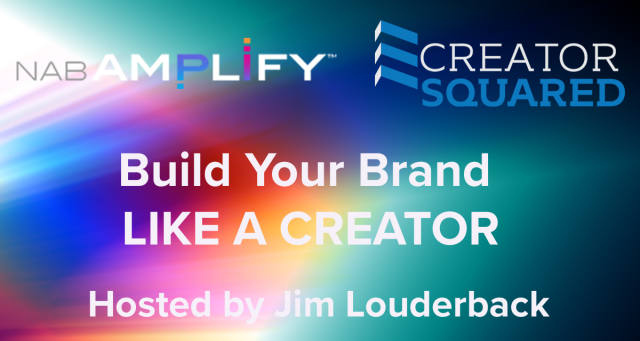Watch the full NAB Show 2023 session “Lights, Camera, Action: Building the DIY Production Studio.”
TL;DR
- As part of its CREATE Experiential Zone, the 2023 NAB Show rounded up a panel of experts to share their insights into constructing the ultimate studio setup.
- Moderated by “Inside the Creator Economy” editor and publisher Jim Louderback, panelists included John Canning, AMD’s director of developer relations for creators; Nelco Media president Philip Nelson; Renee Teeley, creator economy advisor and host of “The Creator Feed” podcast; and Evans Media Group founder Ivan Zeljkovic.
- Workshop participants learned about the key differences between a creator studio and a traditional TV studio, particularly in terms of the balance between capability and cost, along with the need to scale as a creator’s channel grows.
- The panel also addressed solutions for lighting, audio and set design, as well as camera formats, and the choice to use live or edited video.
If you’re a content creator, you know how important it is to produce high-quality content that captures your audience’s attention. However, as a creator, you also know that this can be a costly endeavor. As part of its CREATE Experiential Zone, the 2023 NAB Show rounded up a panel of experts to share their insights into constructing the ultimate studio setup.
Moderated by Jim Louderback, editor and publisher of the Inside the Creator Economy newsletter, this hands-on workshop, “Lights, Camera, Action: Building the DIY Production Studio,” focused on the art of creating and producing content using a range cost-effective technology solutions. The session included John Canning, Director of Developer Relations for Creators at AMD; Philip Nelson, President of Nelco Media; Renee Teeley, creator economy advisor and host of The Creator Feed podcast; and Ivan Zeljkovic, founder of Evans Media Group. Watch the full NAB Show session in the video at the top.
During the workshop, participants learned about the key differences between a creator studio and a traditional TV studio, particularly in terms of the balance between capability and cost. “The difference is blurring quickly,” said Nelson, noting that with the increasing democratization of professional-grade production tools it really comes down to scale.
The biggest difference, said Teeley, “is you are in front of and behind the camera at the same time,” but she cautions that there are actually many different types of creators.
“When I was talking about going to the independent creator and building out a studio, that’s very different than if you think about like the Mr. Beasts of the world that have huge teams around them,” she continued. “And I think their setup is probably a little bit more similar to what you would get with traditional TV studios in some respects, because they have a larger team.”
The panel also addressed the question of whether — or when — to use live footage versus pre-recorded and edited material. “The great thing about live from my perspective is that you do live and you’re finished. You know, we do a lot of studios for government public affairs, and usually they’re understaffed. It’s usually one on camera person and maybe the PIO, the public affairs officer and a video person,” Nelson said.
“And so one of the things that we really push is that live workflow,” he explained. “You know, I’m going to just record it. It’s an hour discussion. At the end of that hour, I’m finished and I’m moving on to the 50 other things I need to do instead of taping a session and now going into post and spending a day or two editing it.”
Live workflows utilizing this one-and-done approach can still be fraught, Teeley warned. “Just ask Netflix,” she said. “They just went through a situation where they were trying to do you live version of Love is Blind and it never aired because they had technical issues. Live can be very challenging you have to fix things in the moment.”
Video formats are another big consideration for content creators. Social media platforms, said Zeljkovic, “pushed us to the vertical, so they pushed us to do real studio posting.”
“If you are creating for various different types of aspect ratios, try to shoot at least 4K so that when you turn it down you’re not you don’t have to crop anything that you wouldn’t want cropped,” Teeley advised. “So trying to if you’re shooting horizontally, trying to do it in 4K and bring that down to a vertical video, but also pay attention to what’s behind you.”
Audio, the panelists agreed, is one of the most crucial aspects of content creation, and can make or break a production. “Having good audio is the key,” said Canning. “You can have bad video and good audio and still have a good production. If you have bad audio and good video, you’re pooched.”
In addition to hands-on guidance on lighting solutions for beginner creators, the workshop also provided tips for creating a set and selecting appropriate backgrounds. “Don’t be stuck to the wall,” Zeljkovic offered. “Try to go as far as you can out of the wall. Please. Just don’t have shadows on the wall. That’s it. I mean, that’s is the one thing that you should not have. And if you can achieve depth of field, that would be perfect.”
The workshop also emphasized the importance of selecting products and infrastructure that can scale as a creator’s channel grows. “As you transition, it’s your workflow” that needs to scale, said Nelson. “You know, people get into the habit of just doing it all themselves. And in order to scale, you got to design a good workflow for your content. You’re producing the show, your guests, if you have guests, and in in letting your team do their jobs, because as a creator, you’re like, ‘I can do this.’”


